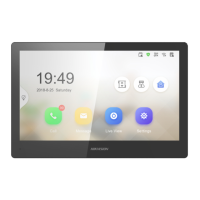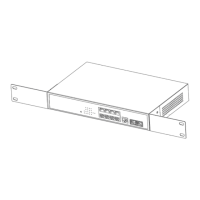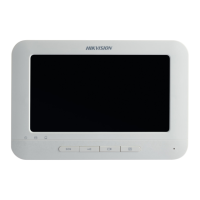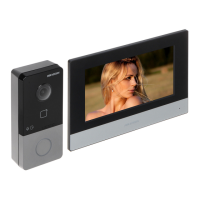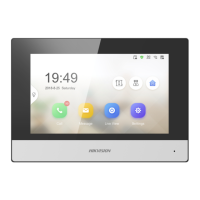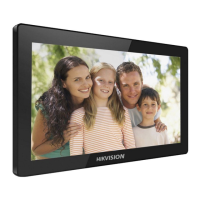
Do you have a question about the HIKVISION Safire DS-KH8520-WTE1 and is the answer not in the manual?
| Model | DS-KH8520-WTE1 |
|---|---|
| Category | Intercom System |
| Brand | HIKVISION |
| Audio Input | Built-in microphone |
| Audio Output | Built-in speaker |
| Audio Compression Rate | 64Kbps |
| Video Compression Standard | H.264 |
| Wired Network | 10/100 Mbps Ethernet |
| Power Supply | DC 12V |
| Operating Humidity | 10% to 90% (non-condensing) |
| Operating System | Embedded Linux |
| Display | 7-inch |
| Display Screen | TFT LCD |
| Resolution | 1024 x 600 |
| Operation Method | Touch screen |
| Camera | Yes |
| Audio Compression Standard | G.711 |
| Wireless Network | Wi-Fi |
| Network Protocol | TCP/IP |
| Alarm Input | 1 |
| Relay Output | 1 channel |
| TF Card | Support |
| Operating Temperature | -10°C to +55°C |
Indicates a hazardous situation which, if not avoided, will or could result in death or serious injury.
Indicates a potentially hazardous situation which, if not avoided, could result in equipment damage, data loss, performance degradation or unexpected results.
Provides additional information to emphasize or supplement important points of the main text.
Activate the indoor station by creating a password for device activation.
Configure network, room No., linked devices, and time display settings.
Set network parameters for proper system operation, ensuring IP addresses are in the same segment.
Configure SIP server connection for communication between indoor station and management center.
Configure network parameters for linked devices like door stations and master stations.
Set indoor station and extension numbers for dialing within the intercom system.
Add cameras to the video intercom system by entering device name and IP address.
Set zone types, alarm types, and delay times for up to 8 zones.
Edit admin, duress, unlock, and arm/disarm passwords for the indoor station.
Synchronize the device's time with NTP servers or set manually.
Configure ringtone, ring duration, call forwarding, and audio volumes.
Restore default settings or all parameters and reboot the system.
Format TF card, clear screen, view version info, and reboot the system.
Reboot the system.
Change the system language.
Adjust the screen brightness.
Configure preference settings like Call Elevator and Alarm.
Upgrade the device firmware.
Connect the device to a mobile client for remote access and monitoring.
Activate the indoor station remotely by creating a password.
Manage devices including activation, adding, editing, and deleting.
Add online or manual video intercom devices to the client software.
Modify network parameters of selected devices from the online list.
Reset device passwords using export/import file methods.
Configure video intercom parameters like ringtone, duration, and speaking time.
Configure various system aspects remotely.
View device information, general settings, time, maintenance, and RS-485.
Configure video intercom parameters like device ID, time, password, and zones.
Configure local and linked network parameters, including SIP settings.
Manage organizations and persons for access control and user functions.
Add, edit, or delete organizations and create organizational hierarchy.
Add persons to organizations and manage them, including issuing cards.
